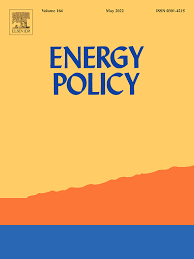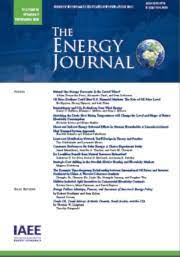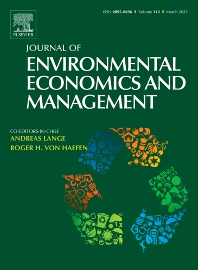Working Papers
“Designing Contracts for the Energy Transition” Fabra, N., and G. Llobet. EEL Working Paper 121
“Storage and Renewable Energy: Friends or Foes” Andrés-Cerezo, D., and N. Fabra. EEL Working Paper 120
“The Energy Transition: a Balancing Act” Fabra, N., and M. Reguant. EEL Working Paper 119
“Observed Patterns of Use and Users of Free-Floating Car-Sharing” Fabra, N., C. Pintassilgo, and M. Souza. EEL Working paper 117
“Energy Tax Exemptions and Industrial Production” Gerster, A., and S. Lamp. EEL Working paper 116
“Electricity Markets in Transition: A proposal for reforming European electricity markets” Fabra, N. EEL Working paper 115
“Do Renewable Energies Create Local Jobs?” Fabra, N., E. Gutiérrez, A. Lacuesta, and R. Ramos. EEL Working paper 114
“The Distributional Impacts of Real-Time Pricing” Cahana, M., N. Fabra, M. Reguant, and J. Wang. EEL Working paper 113
“The Energy Transition: An Industrial Economics Perspective” Fabra, N. EEL Working paper 200
“Firms and Households during the Pandemic: What do we learn from their electricity consumption?” Bover, O., N. Fabra, S. García-Uribe, A. Lacuesta, and R. Ramos. EEL Working paper 112
“Air Pollution from Agricultural Fires Increases Hypertension Risk” Pullabhotla, H. K., and M. Souza. EEL Working paper 111
“Technology-Neutral vs. Technology-Specific Procurement” Fabra, N., and J. P. Montero. EEL Working paper 110
“The implicit cost of carbon abatement during the COVID-19 pandemic” Fabra, N., A. Lacuesta, and M. Souza EEL Working paper 109
“Storing Power: Market Structure Matters” Andrés-Cerezo, A., and N. Fabra. EEL Working paper 108
“Predictive Counterfactuals for Treatment Effect Heterogeneity in Event Studies with Staggered Adoption” M. Souza. EEL Working paper 107
“Preparing for the next crisis: How to secure the supply of essential goods and services” Fabra, N., M. Motta, and M. Peitz. EEL Working paper 106
“Market Power and Price Discrimination: Learning from Changes in Renewables Regulation” Fabra, N., and Imelda. EEL Working paper 105. Appendix. Slides.
“Incentives for Information Provision: Energy Efficiency in the Spanish Rental Market” Bian, X., and N. Fabra. EEL Working paper 104
“Clean Energy Access: Gender Disparity, Health, and Labor Supply” Verma, A. P., and Imelda. EEL Working paper 103
“Variable Pricing and the Cost of Renewable Energy” Imelda, M. Roberts, and M. Fripp. EEL Working paper 102
“Cooking That Kills: Cleaner Energy Access, Indoor Air Pollution, and Health” Imelda. EEL Working paper 101
“Auctions with Unknow Capacities: Understanding Competition among Renewables” Fabra, N., and G. Llobet. EEL Working paper 100
Work in Progress
Selected ongoing work by team members
“Unpacking the Distributional Implications of the Energy Crisis: Lessons from the Spanish Electricity Markete” Fabra, N., Leblanc C., and Souza, M.
The surge in gas prices triggered by the war in Ukraine led to an unprecedented increase in electricity wholesale prices, which passed through to electricity retail prices. Regulatory interventions in wholesale and retail markets partly mitigated the impacts on consumers. In the context of the Spanish electricity market, this paper quantifies the distributional implications of the energy crisis and the subsequent market interventions, disentangling the distributional effects between consumers and electricity companies and across consumer groups.
“The Welfare Effects of Car Sharing.” Fabra, N., E. J. Muehlegger, and M. Souza
We match data from several sources to understand mobility patterns across the city of Madrid. We then build models for the choice of transportation mode, as well as the city’s congestion technology, taking into account the availability of parking across different areas. Within this context, we aim to estimate the effects of car sharing and transport-related carbon abatement policies, along several dimensions.
“Robust Risk Sharing Contracts.” Lamy, L., and C. Leblanc
We consider a principal-agent setup with moral hazard and ex-post risk where the principal is risk-neutral and the agent is either risk-neutral or risk-averse. Under risk neutrality, marginal reward contracts are the sole contracts that guarantee to implement a Pareto-optimal allocation in a prior-free manner. Under risk aversion, contracts that transfer risk from the agent to the principal yield a Pareto-improvement over marginal reward contracts, provided they are incentive compatible. We consider contracts in which the agent signals the project he implements by reporting its expected production, but may misreport it at some cost. We characterize the contracts that always implement a Pareto-improvement over a given marginal reward contract and identify the preferred contract among them, and this robustly to the form of risk aversion and to the technology of the agent. The set of Pareto-improving contracts and the preferred contract depend crucially on how costly it is for the agent to misreport.
Published Papers
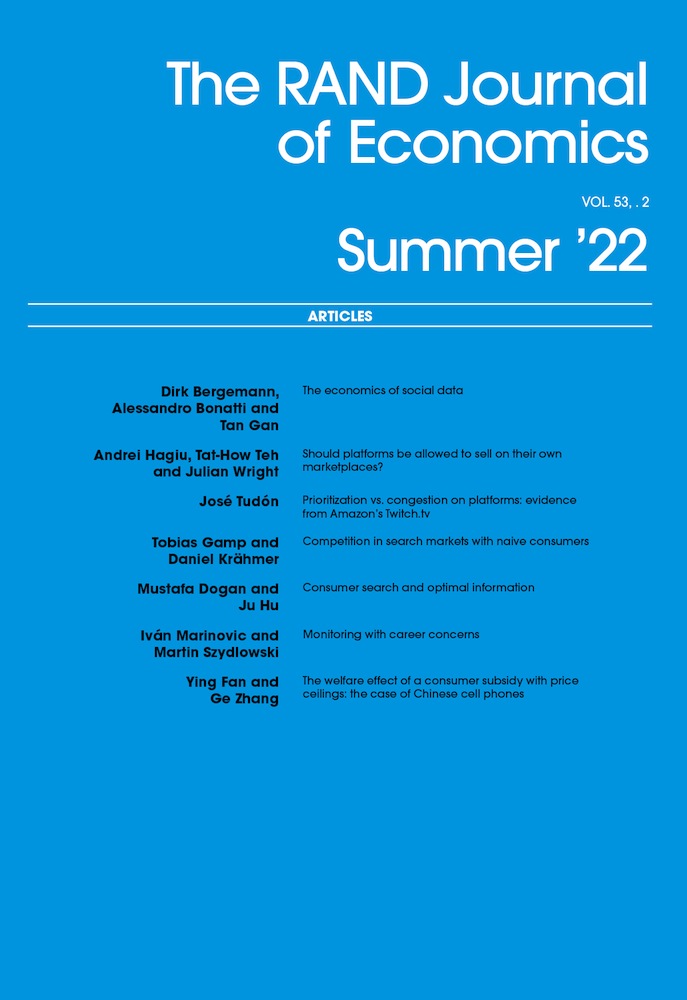
“Fossil Fuels and Renewable Energy: Mix or Match?“, Natalia Fabra, Gerard Llobet. RAND Journal of Economics, forthcoming.
This paper investigates the influence of technological ownership structures on pricing strategies and productive efficiency in oligopoly. Our motivation comes from the evolving landscape of electricity markets where firms are transitioning from diversified to specialized technology portfolios, focusing either on renewable energy or fossil fuels. Our theoretical model demonstrates that diversified firms compete more vigorously than their specialized counterparts. Conversely, specialized firms exhibit higher productive efficiency but only when thermal power sources dominate. The magnitude of our theoretical predictions is assessed through simulations using data from the Spanish electricity market. Methodologically, our analysis offers novel insights for studying multi-unit auctions with cost heterogeneity and privately known capacities.
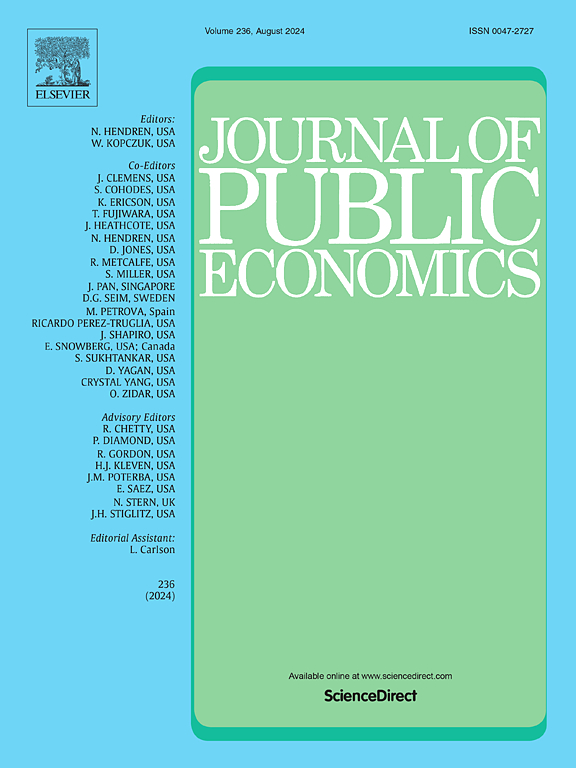
“Do Renewable Energy Investments Create Local Jobs“, Natalia Fabra, E. Gutiérrez, A. Lacuesta and R. Ramos. Journal of Public Economics, 239, November, 105212.
Globally, renewable energy deployment often faces opposition from local communities. Why do residents oppose those investments despite the expectation that the investments will create new jobs? Exploiting the monthly variation in the timing and size of the renewable investments across more than 3,900 Spanish municipalities from 2017 to 2021, we find that the new jobs do not always remain in the municipalities where the plants are built. We find stronger employment and unemployment multipliers for solar than wind projects, reflecting differences in the tasks and skills involved. Beyond the labor market impacts, residents benefit from the investments through greater public spending and increased per capita income. However, these effects are modest, particularly in the case of small to medium-sized plants.
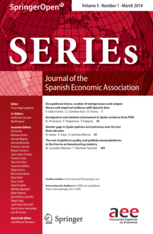
“Observed Patters of Free-Floating Car-Sharing Use“. Natalia Fabra, Catarina Pintassilgo and Mateus Souza. SERIEs, 15, 259–297.
Free-Floating Car-Sharing (FFCS) services allow users to rent electric vehicles by the minute without restrictions on pick-up or drop-off locations within the rental company’s service area. Beyond enlarging the choice set of mobility options, FFCS can reduce congestion and emissions in cities as they promote higher utilization rates of green vehicles. However, whether this potential is fully realized depends on the service’s usage and substitution patterns.
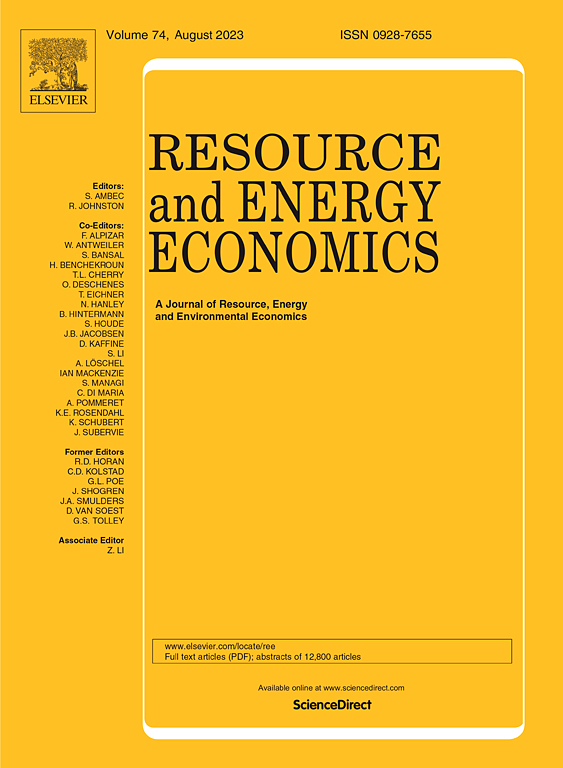
“The Energy Transition: a Balancing Act“. Natalia Fabra and Mar Reguant. Resource and Energy Economics, 76.
As the need for drastic reductions in global greenhouse gas emissions becomes increasingly urgent, governments and policymakers are developing proposals for climate change policies that aim to achieve net zero emissions. However, the challenge lies in determining the most effective way to operationalize this transformation. While cost efficiency is often emphasized as a desirable property, experience shows that it is neither necessary nor sufficient to achieve an optimal policy portfolio. Instead, we advocate for a broader definition of economic efficiency: policies must also be feasible, fair, effective, and credible. Trade-offs between these criteria are common and must be balanced to create a successful policy portfolio. The European experience provides interesting case studies with which to illustrate these efficiency dimensions and their implications.
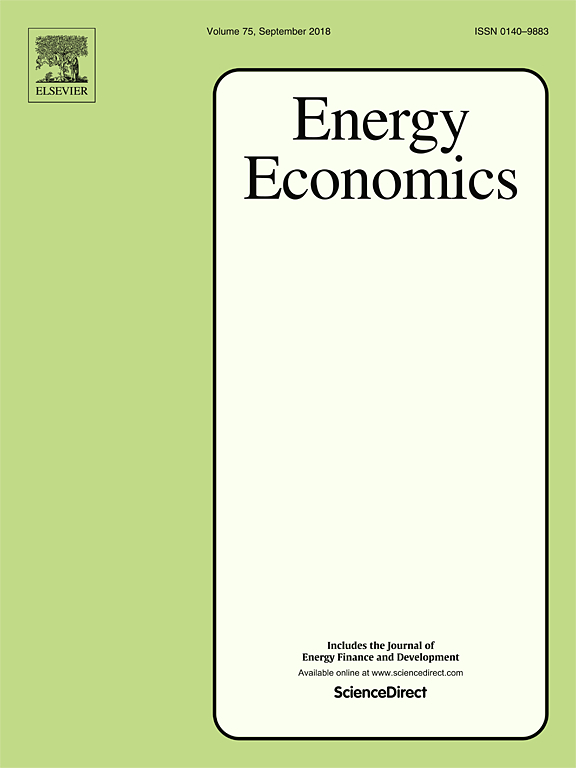
“Reforming European electricity markets: Lessons from the energy crisis“. Natalia Fabra. Energy Economics, Volume 126, October 2023, 106963.
The surge in gas prices due to the Ukrainian war has sparked a European energy crisis, triggering discussions about overhauling electricity markets. The European Commission (EC) proposes maintaining short-term electricity markets, fostering long-term Power Purchase Agreements (PPAs) and Contracts-for-Differences (CfDs), and permitting Member States to regulate retail prices during emergencies. This paper proposes a market design aligning with the EC’s plan while introducing additional elements to address its limitations. Notably, it advocates an enhanced reliance on CfDs tailored to the attributes of the generation technologies. This approach seeks to strike a balance by exposing technologies to short-term price signals while allocating investment risks efficiently.
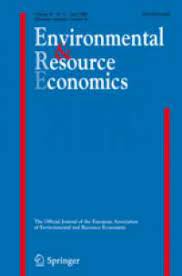
Sunspots That Matter: The Effect of Weather on Solar Technology Adoption. S. Lamp. Environmental and Resource Economics. Forthcoming.
This paper tests for the presence of behavioral biases in household decisions to adopt solar photovoltaic (PV) installations using exogenous variation in weather. I find that residential technology uptake responds to exceptional weather, defined as deviations from the long-term mean, in line with the average time gap between decision-making and completion of the installation. In particular, a one standard deviation increase in sunshine hours during the purchase period leads to an approximate increase of 4.7% in weekly solar PV installations. This effect persists in aggregate data. I consider a range of potential mechanisms and find suggestive evidence for projection bias and salience as key drivers of my results.
“Learning from electricity markets: How to design a resilience strategy“. N. Fabra, M. Motta and M. Peitz. Energy Policy 168, 113116, 2022.
We argue that private incentives are typically insufficient for an economy to be prepared for rare events with large negative impacts. Instead, it is preferable to put in place mechanisms that make sure that prevention, detection and mitigation measures are taken. The economics of electricity capacity mechanisms provides valuable lessons for the provision of essential goods in such events.
“(Mis)allocation of Renewable Energy Sources“. S. Lamp, and M. Samano. Journal of the Association of Environmental and Resource Economists. Volume 10, number 1, January 2023.
Policies to incentivize the adoption of renewable energy sources usually offer little flexibility to adapt to heterogeneous benefits across locations. In this paper, we evaluate the geographical misallocation of solar photovoltaic installations and their relation with the uniform nature of subsidies in Germany.
“Firms and Households during the Pandemic: What do we learn from their electricity consumption?” O. Bover, N. Fabra, S. García-Uribe, A. Lacuesta, and R. Ramos. Energy Journal. Forthcoming. EEL Working Paper 112
We analyze the impact of the COVID-19 pandemic on electricity consumption patterns in Spain. We highlight the importance of decomposing total electricity consumption into consumption by firms and by households to better understand the economic and social impacts of the crisis.
“Air Pollution from Agricultural Fires Increases Hypertension Risk”. H. K. Pullabhotla and M. Souza. Journal of Environmental Economics and Management 115, 102723.
We provide causal estimates of the impact of short-term air pollution on hypertension risk. We find that the incidence of high blood pressure increases by 1.8% for each standard deviation increase in exposure to upwind fires. The impact is stronger among older males, smokers, individuals that were already on blood pressure medication, and individuals belonging to socially marginalized groups. Our estimates suggest that agricultural fires in India lead to hypertension-related additional mortality, associated with USD 9 billion annually in costs.
“Market Power and Price Exposure: Learning from Changes in Renewables Regulation” N. Fabra and Imelda. American Economic Journal: Economic Policy, vol. 15(4), 323-358, 2023. EEL Working Paper 105
Is it possible to reduce price discrimination while enhancing social welfare? In this paper, we explore how forward contracts could contribute towards both goals.
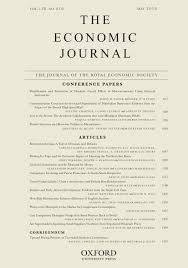
“Auctions with Privately Known Capacities” N. Fabra, and G. Llobet. The Economic Journal. Volume 133 (651), 1106-1146. EEL Working Paper 100. [Replication Pakage]
We characterize bidding equilibria and market outcomes in renewables-dominated systems. A key feature of the model is that the availability of renewable capacity is random and it is private information.
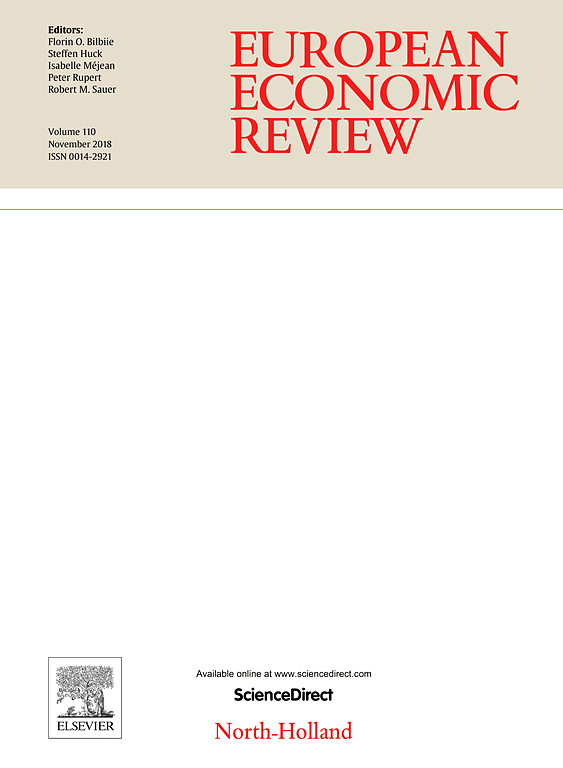
“The implicit cost of carbon abatement during the COVID-19 pandemic” Natalia Fabra, Aitor Lacuesta, and Mateus Souza. European Economic Review 147 , 104165, 2022. EEL Working Paper 109
We provide estimates of the implicit cost of carbon abatement associated with the COVID-19 crisis. We compare that to the costs from renewable investments that would lead to similar abatement. Results suggest that power sector CO2 emissions fell by 4.13 Million Tons (about 11.5%) during 2020 due to the pandemic. There was also a substantial GDP loss in Spain, resulting in an implicit cost of carbon abatement exceeding 7 thousand Euro/Ton of CO2. Investing in renewables to achieve similar carbon abatement would yield an implicit cost of 60-65 Euro/Ton of CO2.
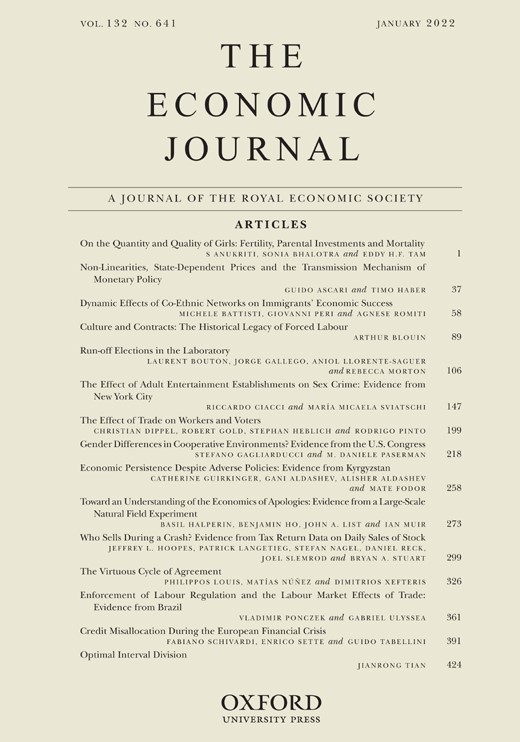
“Technology-Neutral vs. Technology-Specific Procurement” Natalia Fabra and Juan Pablo Montero. The Economic Journal. volume 133 (650), 669-705, 2023. [Replication Package]
An imperfectly informed regulator needs to procure multiple units of a good that can be produced with heterogeneous technologies at various costs. Should she run technology-specific or technology-neutral auctions?

“Clean Energy Access: Gender Disparity, Health, and Labor Supply”, Imelda and Anjali P. Verma. The Economic Journal, volume 133 (650), 845-871, 2023.
We investigate the implications of a large scale household clean energy transition and find that improvement in women\’s health, particularly among those who spend most of their time indoors doing housework, can drive the increase in their productivity, hence allowing them to supply more market labor.

“Storing Power: Market Structure Matters”, David Andrés-Cerezo and Natalia Fabra. Rand Journal of Economics, Volume 54, No. 1, 3-53, 2023
We assess firms\’ incentives to operate and invest in electricity storage facilities under different market structures, including competitive and strategic storage owners in the cases in which the storage owner is integrated with a dominant electricity producer or it is a stand-alone firm. The results are key to understand how to regulate electricity storage, an issue which is critical for the deployment of renewables in electricity markets.

“Large-scale Battery Storage, Short-term Market Outcomes, and Arbitrage“, Stefan Lamp, and Mario Samano. Energy Economics, volume 107, 105786, 2022.
The expansion of the share of renewable energy in the portfolio mix of the electricity generation sector has accelerated the development and integration of large-scale battery storage facilities. We document charging and discharging patterns in the California market and show how the utility-scale batteries’ activity correlates with load and real-time prices during 2018 and 2019. The empirical findings are partially consistent with the optimal solution of an arbitrage maximizer, indicating that battery owners respond to price incentives only at certain hours of the day. In addition, we provide evidence that battery deployment in the years 2013 through 2017 lowered average intra-day wholesale price spreads and that current market conditions limit the profitability of batteries in this market.
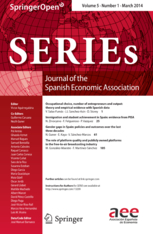
“The economics of the energy transition“, Special Issue, edited by Natalia Fabra, Xavier Labandeira. SERIEs, Avaliable online 02 June 2021.
The Energy Transition is underway. An increasing number of countries—with Europe, and now the USA, leading the way—have committed to drastically reducing their emissions during the coming decades. The European Green Deal, that was announced in Madrid in December 2019 just before the COVID-19 hit our economies, was the first of a series of commitments to reach carbon neutrality no later than 2050. The European Recovery and Resilience Plan, with its green and digital conditionality, has backed this ambition by providing funds which will accelerate the achievement of this goal. All sectors of the economy—with no exception—will be impacted by this challenge: power, transportation, construction or agriculture, to name just a few, will go through profound structural changes which will bring in opportunities, but also risks and challenges. Likewise, the Energy Transition will have deep socio-economic implications, which will broadly depend on the set of regulatory and tax policies that will be put in place.
This Special issue, edited by Natalia Fabra and Xavier Lavandeira, gathers a set of articles that address these challenges and opportunities.
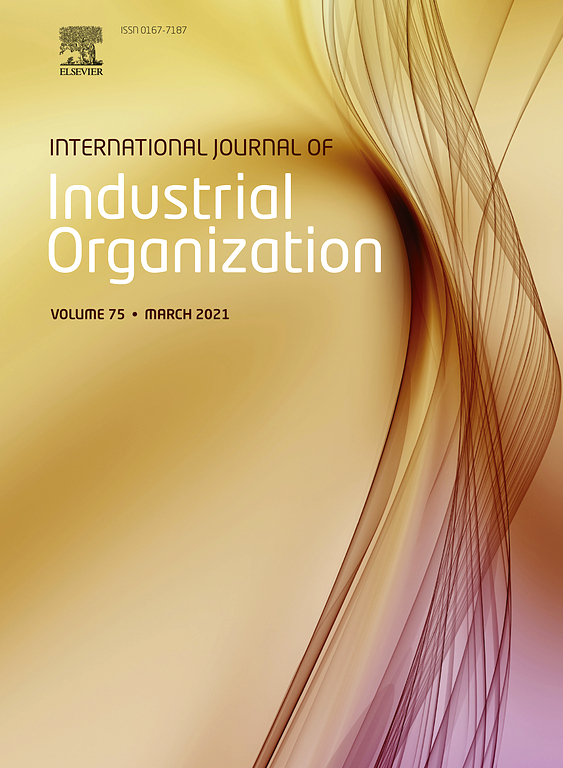
“The Energy Transition: An Industrial Economics Perspective” Natalia Fabra, International Journal of Industrial Organization, Volume 79, 102734, 2021. Working paper.
Addressing climate change requires full decarbonization of our economies. Whether this objective is achieved at least cost for society hinges on good policy design. In turn, this calls for a thorough understanding of firms\’ and consumers\’ incentives in the presence of asymmetric information, the determinants of strategic interaction, and the impact of market design and market structure on the intensity of competition. Industrial Economics thus has much to contribute towards a successful Energy Transition, while benefiting from the exciting research opportunities it brings. In this paper, I survey some of the recent developments in this area. My focus is on the power sector, and in particular, on the regulatory and market design challenges triggered by the expansion of intermittent renewables with almost zero marginal costs. I conclude with some questions that merit further research.
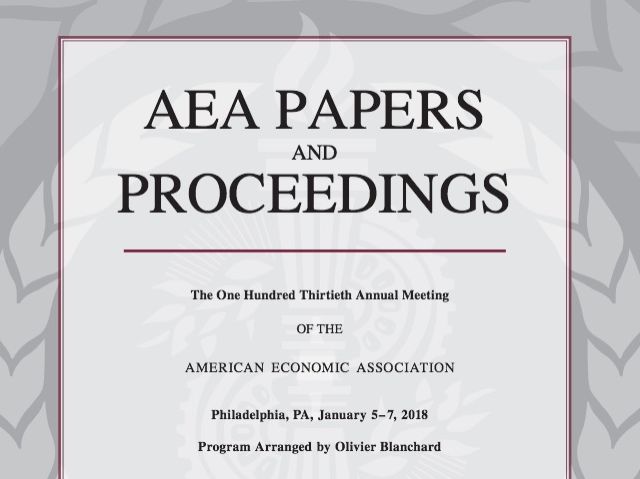
“Estimating the Elasticity to Real Time Pricing: Evidence from the Spanish Electricity Market” Natalia Fabra, David Rapson, Mar Reguant, and Jungyuan Wang , American Economic Association Papers & Proceedings, vol. 111, May 2021.
We estimate consumer response to the first large-scale real-time electricity pricing (RTP) program. In 2015, RTP became the default tariff for residential customers in Spain, exposing them to prices that vary hourly based on day-ahead wholesale prices. Using expected national wind production as an instrument for price, we estimate household-level demand elasticities for RTP households and non-RTP (placebo) households. Estimates show no difference in behavior across RTP and non-RTP households. Reasons for non-response may include low potential gains or high non-monetary costs of information acquisition and behavioral change. We discuss implications for optimal dynamic electricity pricing.

“Cooking That Kills: Cleaner Energy Access, Indoor Air Pollution, and Health” Imelda, Journal of Development Economics, volume 147, 102548, 2020.
I find significant health benefits from a large scale clean energy transition, suggesting that subsidizing of cleaner-burning fuels can pay public health dividends.
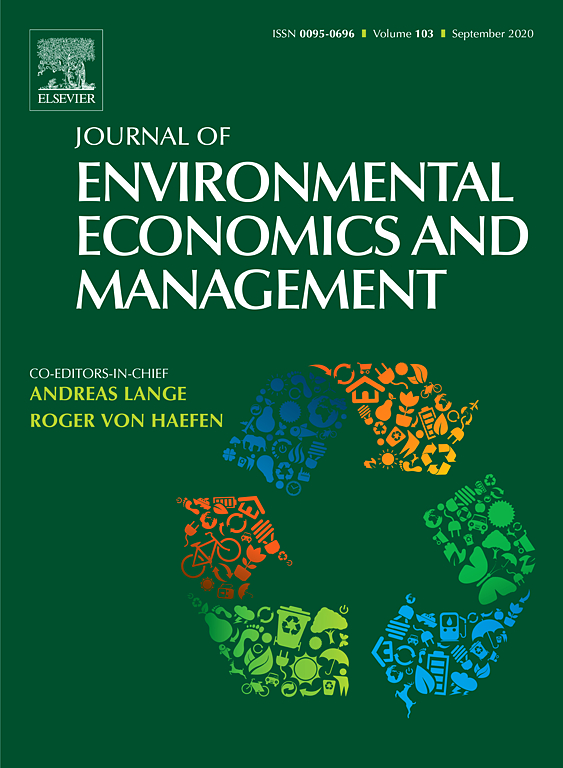
“Social comparison nudges without monetary incentives: Evidence from home energy reports” Myers E. and M. Souza, Journal of Environmental Economics and Management, 101, 102315, 2020
We explore the mechanisms driving the effectiveness of a widely-used behavioral intervention to promote energy conservation. Results suggest that the nudges induce almost no behavioral changes for heating demand in settings where tenants do not directly pay for energy.

“Incentives for Information Provision: Energy Efficiency in the Spanish Rental Market” Bian, X. and N. Fabra. Energy Economics, 2020.
We assess landlords incentives to obtain and disclose energy efficiency certificates in the rental market. We show that incentives to provide energy efficiency information are higher in markets with higher penetration of certificates.

“Indoor Air Pollution and Infant Mortality: A New Approach” Imelda, American Economic Association Papers & Proceedings, 108, 416-421, 2018
We evaluate the effects of a program, implemented by the Indonesian government, which promoted the substitution of kerosene by gas as cooking fuel. We find that four fewer infants died per 10,000 live births than would have in the absence of the program.
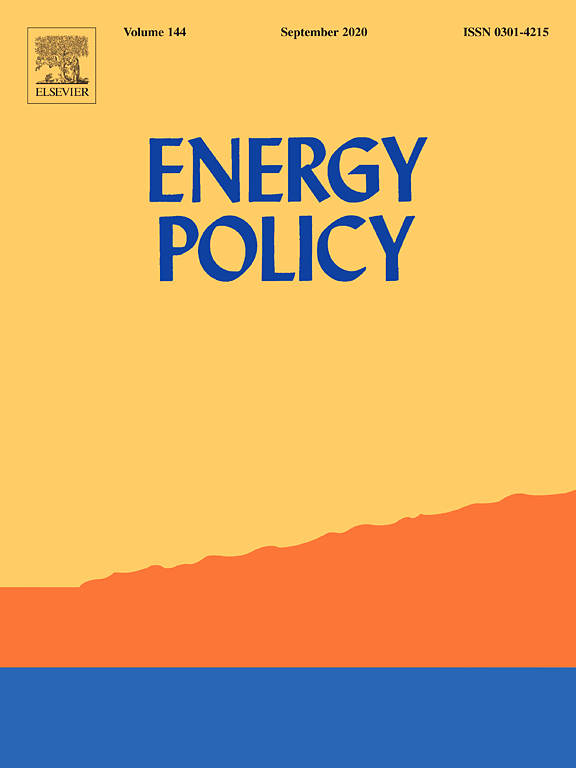
“Why are rented dwellings less energy-efficient? Evidence from a representative sample of the U.S. housing stock” Souza, M., Energy Policy, 118, 149-159, 2018
This paper compares energy-efficient appliance adoption rates across U.S. residential markets. Results suggest that renters are less likely than homeowners to have energy-efficient appliances. Differences are attenuated when landlords pay the utility bills, when energy prices are higher, and for longer-term rentals.

“A Primer on Capacity Mechanisms” Fabra, N., Energy Economics, 75, 323-335, 2018
We model the need and effects of capacity mechanisms in electricity markets. We find that combining price caps and capacity payments allows to disentangle the two-fold objective of inducing the right investment incentives while mitigating market power.
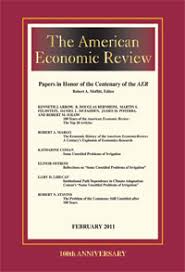
“Pass-through of Emissions Costs in Electricity Markets”, Fabra, N., and M. Reguant, American Economic Review, 104(9), 2872-2899, 2014
We find that the pass-through rate of carbon prices to electricity prices in the Spanish electricity market is above 80%. The high frequency of auctions and the symmetry across all firms’ technology portfolios contribute to such a high pass-through rate.

“How to Allocate Forward Contracts: the case of electricity markets”, Fabra, N., and M.-A. de Frutos, European Economic Review, 56(3), 451-469, 2012
We model strategic bidding behavior in electricity markets. We show that allocating forward contracts across firms contributes to mitigating market as long as the contract allocation makes all firms virtually symmetric.

“Market Design and Investment Incentives”, Fabra, N., N-H von der Fehr and M-A de Frutos, Economic Journal, 121, 1340-1360, 2011
We assess firms’ investment incentives in electricity generation capacity when the energy market is organized as either a uniform-price auction or a discriminatory auction. We find that investment incentives are similar across the two auction formats, while prices tend to be lower under the discriminatory auction.
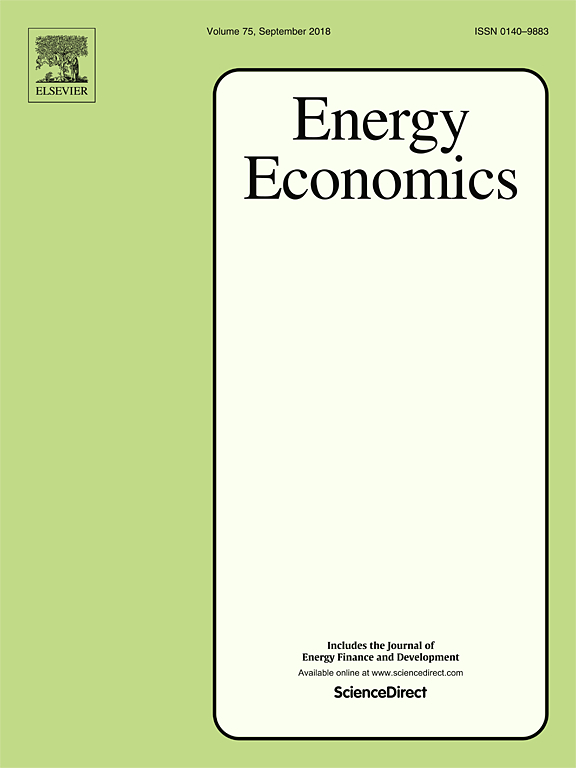
“Supply Security and Short-Run Capacity Markets for Electricity”, Fabra, N., and A. Creti, Energy Economics, 29 (2), 259-276, 2007
We model the interaction between capacity markets and energy markets when nearby countries rely on scarcity pricing to induce capacity investments.
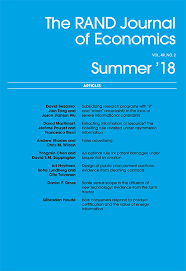
“Designing Electricity Auctions”, Fabra, N., N-H von der Fehr, and D. Harbord, Rand Journal of Economics, 37 (1), 23-46, 2006
We model strategic bidding behavior in electricity markets organized as either uniform-price auctions or discriminatory auctions. We show the latter mitigate market power, resulting in lower albeit more volatile prices.

“Price Wars and Collusion in the Spanish Electricity Market”, Fabra, N., and J. Toro, International Journal of Industrial Organization, 23 (3-4), 155-181, 2005
We study the occurrence of price wars in the Spanish electricity market. We find evidence consistent with the use of such price wars as disciplining devices among colluding firms.
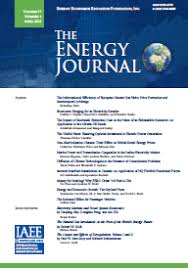
“The Spanish Electricity Industry: Plus ca Change…” con Claude Crampes, Energy Journal, 26, 2005
We describe regulatory changes in the Spanish electricity market, which is embarked in an ongoing process of reform.
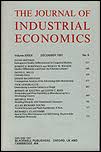
“Tacit Collusion in Repeated Auctions: Uniform versus Discriminatory auctions”, Journal of Industrial Economics, 51 (3) 271-293, 2003
We show that tacit collusion is more easily sustainable under uniform-price auctions as compared to discriminatory auctions.

